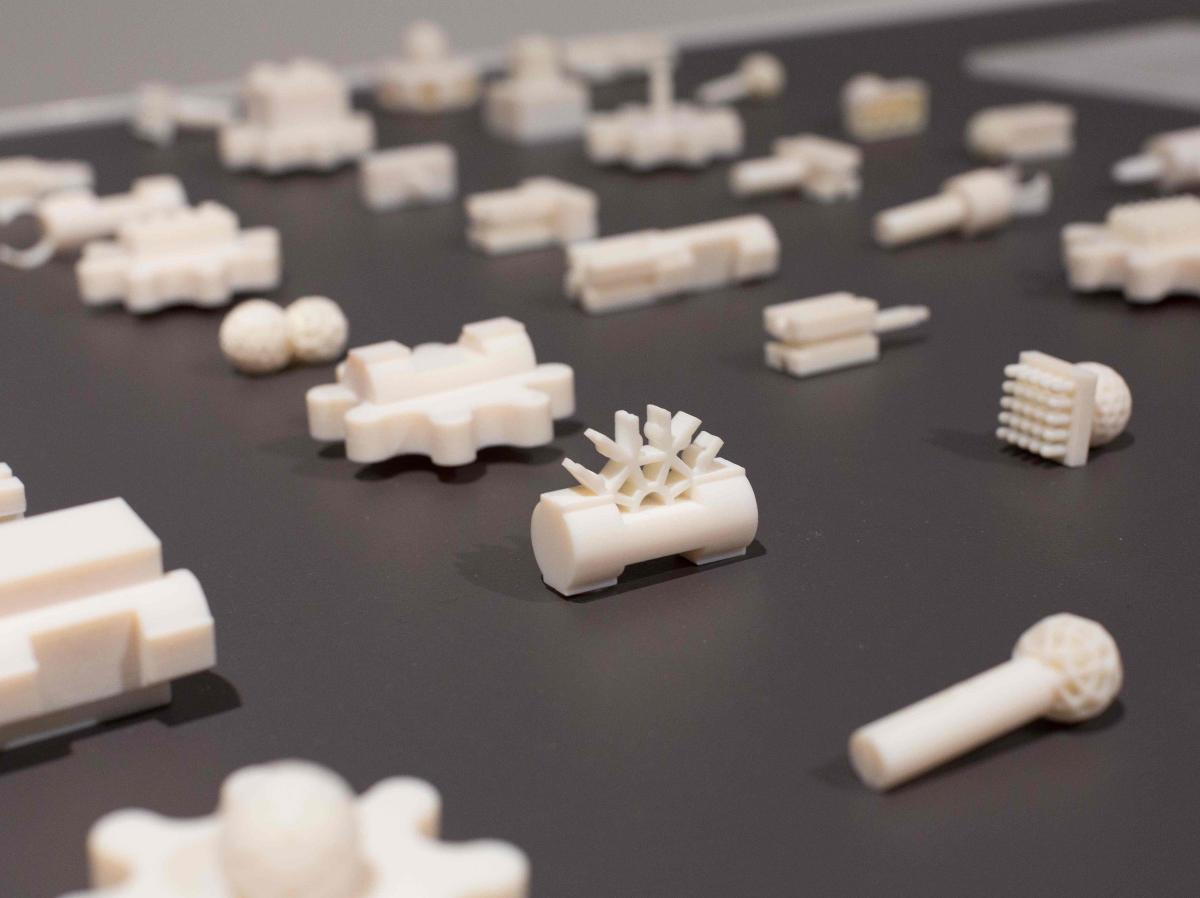Hello World: Code and Design (installation view), curated by Aaron Seymour. Photo: Jessica Maurer Photography.
As technologies continue to rapidly move forward, we are forced to adapt to their integration into our lives. The future holds great opportunity; it begs to become a world where body parts can be printed and used for transplants, where our memories can be digitalised and framed. Hello World: Code and Design reflects upon what we already know of the future, as well as its imminence, and challenges our perception of what will come next.
Curator Aaron Seymour immerses his audience into a world of revived old technologies and the development of new ones. A collection of objects, all individually unique in addressing the world of technology and design, create an indisputable sense of a connected world and a future where numbers rule.
Josh Roseberg’s Letters of E.B. White is a standout. A simple printed book laid open on the table the Charlotte’s Web author’s debilitating Alzheimer’s disease via distorted words on the page. Roseberg has cleverly written short script which was interfaced with Google translate, feeding selected words through several languages and then back into English. These ‘mis-remembered’ words, as Seymour puts it, represent the toll dementia took upon Charlotte’s Web author E.B. White, as they flutter through the letters, incoherent with words he wrote. Roseberg demonstrates how code can be manipulated for creative literature.
Collapse, by Australian based experimental design studio Alterfact, identifies the restrictions, failures and ‘collapses’ of data as it takes a physical form. In a series of collapsed 3D ceramics Alterfact proves that data cannot always withstand the demands of physicality. Alterfact comments directly on the ineffectiveness of the digital world upon design; some of them twisted, others deflated, bent and misshapen.
Seymour cleverly places the work of Wang and Söderström (designers) and Unique Board (manufacturer) next to Alterfact’s. Excavation I, II and III symbolise the phasing of the 3D printer from a commercial to a domestic tool. The unique flower vases demonstrate Unique Board’s limited edition print-on-demand art object service. Using social media to source emerging designers, Unique Board brings to life artistic ideas through digital production, purchases of which are not limited in quantity but in time, with a set period of only 90 days.
Hello World: Code and Design cleverly combines a critique of contemporary methods of production, information sharing and creativity while questioning the near future and enquiring into the value of code along the way. Seymour effectively forces his audience the think about the future and the power of speculative design. Hello World… gives a heart to code, giving a human presence to a future that is closer that we think.
Rating: 4 stars ★★★★
Hello World: Code and Design
Curated by Aaron Seymour
UTS Gallery, Broadway
Artists: A2-Type, Alterfact, Aaron Koblin, Ben Fry, Ben Roberts, Defense Distributed, Golan Levin, Helen Yentus, Humanoid, Iris Van Herpen, Josh Roseberg, Kouhei Nakama, Leah Buechley, Reinoud van Laar, Shawn Sims, Shih Wei Chieh, Studio Pinaffo-Pluvinage, Takashi Kawashima, Tristan Perich, Universal Everything, Wang & Söderström, Ying Gao, Zeitguised





